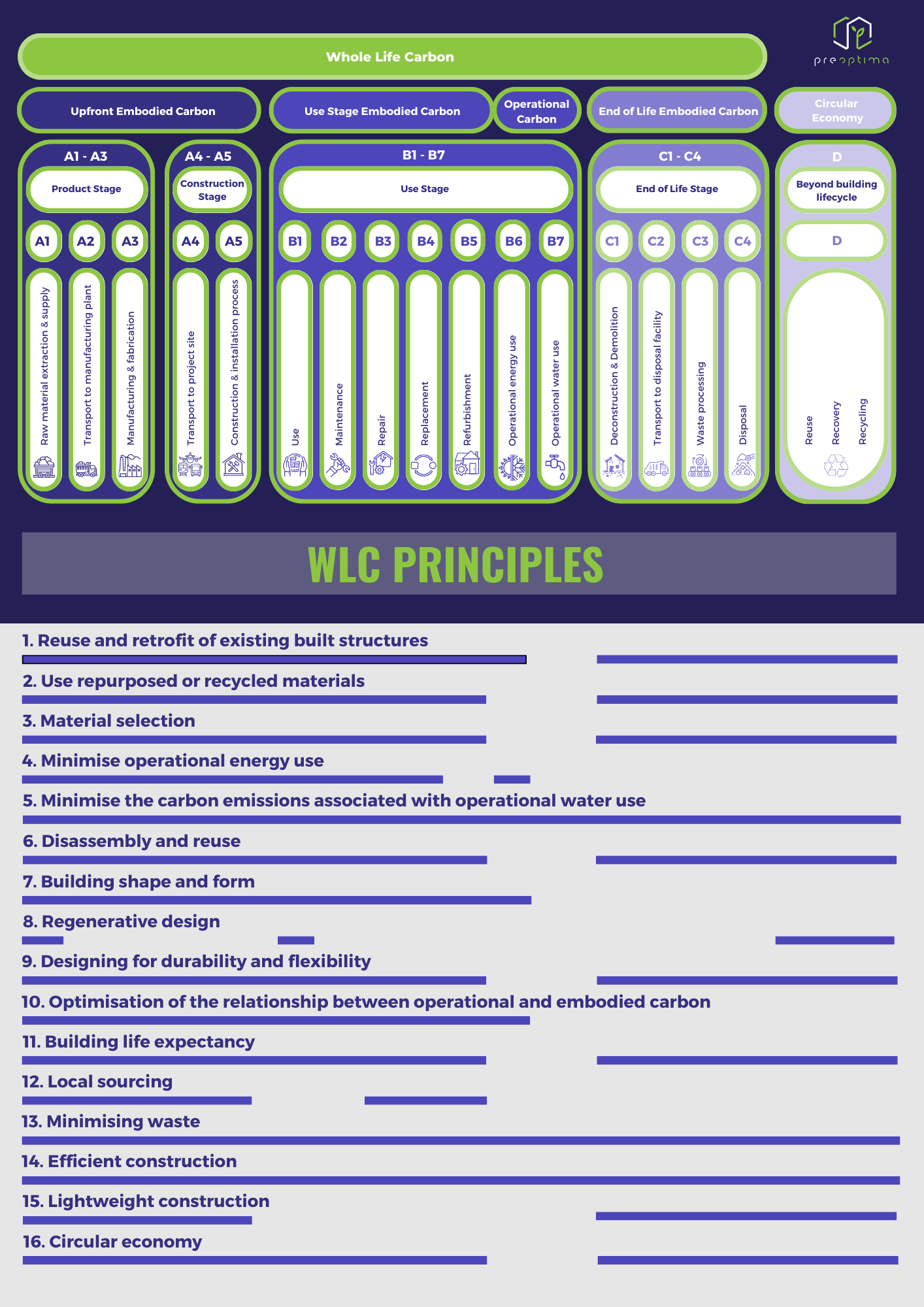The London Plan: A Blueprint for a Sustainable and Carbon-Neutral Future
Read Time 5 mins | Written by: Alex Bantock
When it comes to cities worldwide, London is stepping into the limelight with its innovative urban planning and sustainability strategy, known as the London Plan. The London Plan is more than just a document - it is a vision for the city's future, steering London's growth and development over the years to come. This comprehensive plan, put forth by the Mayor of London, encapsulates everything from urban development and housing to transportation and economic growth. Yet, one facet of the plan truly stands out: its bold approach towards sustainability and carbon emissions.
Understanding Whole Life-Cycle Carbon Assessments
A significant step taken by the London Plan is its mandate for Whole Life-Cycle Carbon (WLCC or WLC) assessments, as seen in Policy SI 2 Minimising greenhouse gas emissions.
Development proposals referable to the Mayor should calculate whole lifecycle carbon emissions through a nationally recognised Whole Life-Cycle Carbon Assessment and demonstrate actions taken to reduce life-cycle carbon emissions.
This forward-thinking approach requires that referable applications provide a full analysis of a building's total carbon footprint across its entire lifecycle - extending beyond the much-targeted operational energy use to the sourcing of construction materials, major maintenance and refurbishment activities, and the building's eventual end-of-life disposal.
The reasoning behind the WLC approach is to allow city planners and developers to gain a complete understanding of the carbon implications of their decisions, enabling them to strategically opt for methods and materials that minimise the total carbon footprint over the entire life cycle of the building.
The WLC requirement is not subject to the Mayor’s net zero-carbon target, but planning applicants are required to calculate operational and embodied emissions, and demonstrate how they can be reduced as part of the WLC assessment.
Some considerations prior to submitting a WLC assessment:
-
Achieving the maximum WLC reductions for a proposed building begins early on in a development’s design (at the earliest possible stages of project development)
-
The WLC principles (below) should inform the design of the development from the earliest stages and throughout the WLC assessment process.
When to submit a WLC assessment:
For planning applications that are referable to the Mayor, a WLC assessment should be submitted at the following stages:
-
pre-application (where relevant)
-
planning application submission (i.e. RIBA stage 2/3)
-
Post-construction (i.e. prior to occupation of the development. Generally, it would be expected that the assessment would be received three months post-construction)
Therefore, continued monitoring of carbon emissions is crucial to ensure that A) The design ensures maximum potential of carbon avoided, and B) The as-built carbon values are as true to the initial design WLC figures as possible (with little discrepancy).
Reporting to the Greater London Authority (GLA):
-
A WLC assessment template has been developed that includes all of the information applicants will need to submit at each stage; it is available on the GLA’s website.
-
Ensuring data quality: Applicants and developers should adopt third-party quality assurance mechanisms to ensure accuracy in their submissions. The mechanisms used should be reported at the planning application submission and post-construction stages using the template. Allocating the same person, team or organisation to oversee the WLC assessment process from design to post-construction, where possible, would provide consistency in reporting.
 The WLC principles. Applicants should consider all of the principles and, subject to each development’s unique characteristics, provide examples of how the design of the development is taking each principle into account. Reasons for not considering certain principles should also be provided in the template. Applicants are encouraged to keep returning to the WLC principles throughout each stage of the WLC assessment so that they continue to inform the design of the development as it evolves.
The WLC principles. Applicants should consider all of the principles and, subject to each development’s unique characteristics, provide examples of how the design of the development is taking each principle into account. Reasons for not considering certain principles should also be provided in the template. Applicants are encouraged to keep returning to the WLC principles throughout each stage of the WLC assessment so that they continue to inform the design of the development as it evolves.Charting the Course Towards a Carbon-Neutral Future
Furthermore, the London Plan doesn't just pay lip service to the idea of carbon reduction through unquantified suggestions or measures - it demands tangible action. Specifically, the plan requires that all new developments must demonstrate a 35% reduction in carbon emissions beyond what is stipulated in the Building Regulations.
In addition, the commitment to carbon reduction carries financial implications too. Developers that fail to meet this carbon reduction target are required to contribute monetarily to the borough's carbon offset fund, essentially a cash-in-lieu commitment. This approach fosters accountability and financial incentives for developers to uphold the city's commitment to carbon reduction.
At its core, the London Plan is not just about transforming the city's infrastructure, but also about transforming its ethos towards a sustainable, carbon-neutral future. The emphasis on WLC analysis signifies a critical shift in the city's approach to sustainable urban spaces. It also recognises the construction industry's crucial role in driving sustainability and reducing carbon emissions.
The London Plan shows that city planning can and should encompass more than just physical infrastructure. It's about a shared vision for a sustainable future, with tangible steps and commitments to turn this vision into a reality. It's a journey that involves all of us - city planners, developers, and residents - and it's an exciting one that we are eagerly looking forward to!
We'd love to hear from you!

